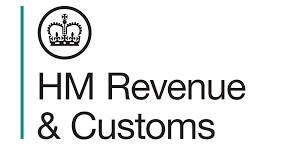HMRC SDLT: Example 6: Tax Relief for Converting Multiple Flats into a Hotel
Stamp Duty Land Tax Relief for Multiple Dwellings: Example 6
This example explains the Stamp Duty Land Tax (SDLT) implications when purchasing a building with multiple dwellings, specifically six flats, and later converting it into a hotel. Initially, the transaction qualifies for relief due to the acquisition of multiple dwellings. However, when the conversion work begins, the nature of the transaction changes, affecting the SDLT liability.
- The building’s freehold, consisting of six flats, is bought for £1.2 million.
- Initially, the transaction qualifies for multiple dwellings relief, as it involves more than one dwelling.
- The tax rate is determined by dividing the total consideration by the number of dwellings.
- The higher SDLT rate for additional dwellings applies, with more details available at SDLTM09730.
- If any purchaser is not UK resident, non-resident SDLT rates may apply, as detailed at SDLTM09860.
- Upon conversion to a hotel, the transaction is reclassified as non-residential, requiring a new tax return and additional payment within 30 days.
“`

Read the original guidance here:
HMRC SDLT: Example 6: Tax Relief for Converting Multiple Flats into a Hotel
Understanding SDLT Relief for Multiple Dwellings
Overview of SDLT and Relevant Transactions
Stamp Duty Land Tax (SDLT) applies when you purchase property in the UK. A relevant transaction occurs when you buy more than one dwelling. In practical terms, this often means acquiring a building divided into separate residential units, like flats or houses.
Example of Relief for Multiple Dwellings
Let’s look at a specific example to illustrate how SDLT relief works in the case of multiple dwellings.
– A buyer purchases the freehold of a building containing six flats for £1.2 million.
– At the time of purchase, these flats are rented out through Assured Shorthold tenancies.
– After two years, the tenancies end, and the buyer decides to convert the building into a hotel.
SDLT Calculation at Purchase
Since the buyer is acquiring six separate flats, this transaction qualifies as a relevant transaction. The SDLT rate is based on the total price paid, divided by the number of dwellings involved.
– In this case, the calculation would look something like this:
– Total amount paid: £1.2 million
– Number of dwellings: 6
– SDLT calculation: £1.2 million divided by 6 equals £200,000 per dwelling.
In this situation, the buyer will need to apply the higher rate of tax that is applicable to additional dwellings. This higher rate generally applies when you acquire more than one dwelling. Information about this higher rate can be found at SDLTM09730.
It’s also important to note that if any of the purchasers are not UK residents, the non-resident rates of SDLT might come into play. More information about these rates can be found at SDLTM09860.
Change of Use and Impact on SDLT
When the buyer starts conversion work on the flats within three years of the acquisition date, the situation changes. At this point, the flats are no longer suitable for use as dwellings.
– The key point here is that the moment the conversion work begins, the change is considered to have happened before the purchase actually took place. This means the transaction is no longer classified as relevant.
Now, as the subject matter of the transaction shifts to a non-residential purpose, the SDLT rate calculation changes. The tax is now determined solely by the total consideration paid at the time of purchase, disregarding the previous breakdown by dwelling.
Additional Tax Obligation
Once the conversion work begins, the buyer must take action. Specifically, the buyer is required to:
– Submit a further SDLT return.
– Pay the additional tax due as a result of this change in the property’s status.
This must be done within 30 days of starting the conversion work. This is very important because failing to make this return or pay the tax on time could lead to penalties.
Key Takeaways on SDLT and Multiple Dwellings
– When purchasing multiple residential units, such as flats, it is essential to understand how SDLT rates are applied and what reliefs might be available.
– Changes in the utilization of a property can significantly impact your tax obligations.
– Always be aware of deadlines for returns to avoid additional financial penalties.
Further Guidance and Information
If you need more information about SDLT rules and how they work with multiple dwellings, you can refer to HMRC’s official guidance or seek advice from specialists.
For specific cases like the example above, understanding your responsibilities regarding SDLT can help ensure compliance and potentially lead to financial savings through the correct application of reliefs.
Always keep an eye on your legal obligations after purchasing property, especially when planning changes that might affect its classification for tax purposes.
For further clarifications on transactions similar to the one described, you might want to explore more detailed guidance available from HMRC or seek professional advice.







